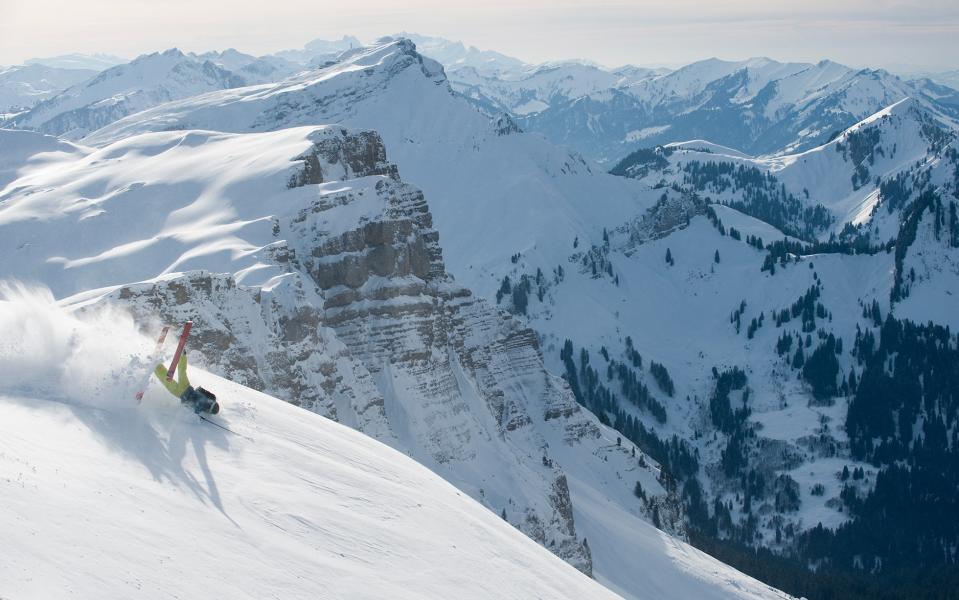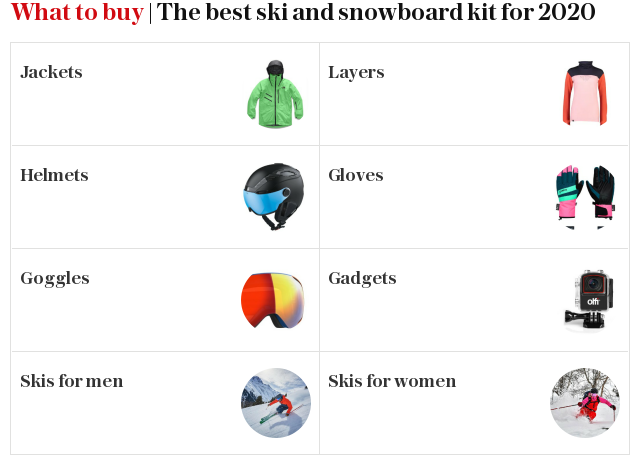Nine tips on how to stay safe on the ski slopes

The adrenaline rush of skiing and snowboarding means inevitably there are inherent risks. Here's nine top tips to make your experience on the slopes a little safer.
1. Obey snowsports highway code
The FIS (International Ski Federation) has established 10 rules of ski and snowboard conduct that are legally binding in much the same way as rules of the road apply to car drivers. They are all common sense but it’s worth knowing them before hitting the slopes. A key rule is to adapt the manner and speed of your skiing to your ability and to the general conditions. Another is that the skier or snowboarder in front has priority.
2. Know how to avoid collisions
It is essential to be constantly aware of your immediate surroundings. The more skilfull the skier or snowboarder the more time he or she has to glance around. The biggest single cause of collision is skiing out of control. The second cause is the failure of skiers to obey a basic rule: always look uphill before setting off. Remember too that snowboarders follow a different line down the mountain from skiers and may be blind to you on the turn.
3. Don't lie about your ability
Incorrectly adjusted ski bindings account for many leg and knee injuries. The suitable DIN setting is a complicated equation of age, ability, height and weight. Don't be tempted to lie about the first three when getting them fitted, and know your own weight in kilos and pounds.
Don't just take the word of a harassed shop technician. Levels of expertise vary. Find out more, work out your own setting and remember it for next time.

4. Watch out for ice
In hard-packed snow it is essential your skis are properly tuned and edges sharpened by a shop technician, unless you’re particularly handy at doing it yourself. The passage of skiers and snowboarders can scrape the soft snow from lower slopes – especially those served by artificial snow cannons – leaving large patches of ice.
Experienced skiers should manage to make their edges hold. For others, it’s best not to turn on the ice at all, but ski on to the powdered snow beyond.
5. Wear a helmet
During the last 20 years, helmet wearing on the slopes has gone from the margins to the mainstream. The shift is partly due to high profile accidents such as former F1 racing driver Michael Schumacher suffering brain damage after a skiing accident in 2013, though he was wearing a helmet. It helped bring into focus that skiing and snowboarding can be inherently dangerous with people sliding down the slopes at up to 50mph.

A greater awareness has gone hand-in-hand with improved helmet design which has continued to evolve in recent years. Innovations include improved fit adjustment and better protection in more slimline designs, as well as technology that can reduce the impact of a crash from any direction, including at an angle. Our guide to helmets tells you everything you need to know about buying one and we round up the best on offer this season.
6. Consider body armour
Should you be inspired by the freestyle ski and snowboard talent on show at the Winter Olympics to hit the terrain park or more modestly some tricks off the edge of the piste, it makes sense to wear a lightweight spine protector. Our round-up highlights some of the best.
7. Ski safely off piste
Despite all the warnings, many skiers regularly venture away from the prepared runs without the help of a local, qualified guide. Doing so in stable snow conditions may not be too risky, though in early snow you need to watch out for tree stumps and rocks. But to ski in crevassed glacial terrain without a guide is to court disaster.

The American-born avalanche expert Henry Schniewind works on the principle that people can't be stopped going off piste and must be helped to recognise the dangers, principally from avalanches. He provides top tips on how to be prepared for an avalanche, how to avoid triggering one and what to do if caught in one.
8. Carry the essential kit you need to go off piste
Whether you’re skiing off piste with a guide or not, you will need three essential items of kit - an avalanche transceiver, collapsible three-metre probe and shovel and be well versed in how to use them. Schniewind suggests a two or three hour practical training session with safety equipment, and refreshing yourself each year.
Other kit to consider is an avalanche airbag system incorporated into a backpack. With a large balloon or balloons that inflate at the pull of a cord, they’re designed to make the person wearing it larger so they naturally rise to the surface of the snow.
The avalanche rescue system Recco is an additional safety measure. It is a microchip system that is often built into technical ski clothing or can be purchased cheaply. Equipment on a rescue helicopter can accurately pinpoint the buried skier. But time is the enemy of the avalanche victim.
Avalanche debris can have the consistency of drying concrete, and you can't shift it with a ski or a snowboard.
9. Stay safe in the trees
The golden rule is always to ski with at least one other person when heading into the trees. Keep them in view as much as possible and if you do lose visual contact, call out to each other and regroup
See tree, ski tree, so the saying goes. So eye up the spaces as the body tends to follow where the eyes are looking. As trees tend to be fairly tightly grouped together, be prepared to make lots of short turns.
Don't use wrist straps as ski poles can easily get caught on branches.

In very snowy areas be aware of tree wells. They are areas of loose, uncompressed snow forming a depression or hole around the base of a tree and are hidden by its low hanging branches. Evergreen trees, especially, have large and low hanging branches that can hold lots of snow.
Fall headfirst into a tree well and it's very difficult to struggle free. Loosened snow then falls around victims, often causing suffocation. Survival chances are slim without someone to help pull you free. The problem is more common in North America than Europe as there are more trees within resort boundaries.
What to do at the scene of an accident
1. Assess the overall scene
Don't complicate matters by adding yourself to the list of casualties – approach with care, looking out for other skiers, precipices, treacherous snow or any other signs of possible danger.
Follow the first aid ABC rule: Airway, Breathing and Circulation. Check that the person's nose and mouth are unobstructed. Check pulse and for signs of breathing. If the person is alert and conscious, this assessment is made in an instant. When someone does not immediately respond it is more difficult. You may need to clear the person's nose and mouth. Be aware of the possibility of a neck injury - and avoid movement at the neck.

Do not remove a ski helmet if there has been a possible neck injury.
2. Get help
This is the single most important step. If you have no phone or don't know the right number, send another skier to raise the alarm. (Emergency numbers are printed on many piste maps or you can note them down when you buy your lift pass.) Keep calm and organise those around you. There may be someone who has medical or first-aid training.
If the casualty is unconscious and not breathing, and you cannot feel a pulse, you may need to commence mouth-to-mouth ventilation with cardiac compression. Learn how to do this on a first-aid course at home rather than in a white-out on the side of a mountain.
3. Keep the casualty safe and warm
Where possible, move the casualty out of any immediate danger – again with awareness of a possible neck injury. If the incident is on the piste, take steps to warn any other skiers.
Keep the casualty as warm as possible – a person (and especially a child) can chill rapidly when on or in the snow. Don't give the person anything to eat or drink: alcohol can add to hypothermia and an empty stomach is important should the person require an anaesthetic.
4. Make the casualty as comfortable as possible while waiting for help
Immobilise any limb in which you suspect a fracture and apply firm pressure to any bleeding. Many people forget to say anything to an injured person – speak gently and reassuringly to them and tell them that help is on its way.

